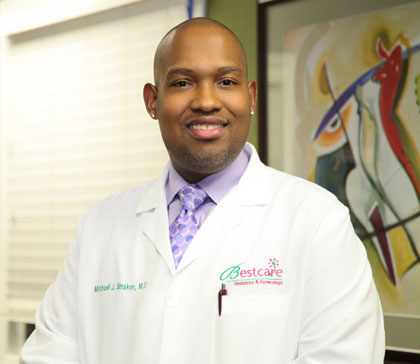When Clara Maass Medical Center (CMMC) added midwifery to its services two years ago, the medical center enhanced its well-rounded approach to maternal care. How do the two types of professionals work together? Michael Straker, MD, Director of the Department of Obstetrics and Gynecology, and Suzette Gray, CNM, explain:

Two Kinds of Training
OB/GYNs are medical doctors. The midwives at CMMC are all Certified Nurse Midwives (CNMs), which means that each holds a master’s degree or higher in the field.
Like OB/GYNs, CNMs are trained to care for women throughout pregnancy, labor and birth, as well as to handle gynecological needs, including prescribing medication and contraceptives.
Midwives can manage and deliver babies for low-risk maternity patients, while OB/GYNs handle high-risk cases. “A patient is considered high-risk if they have had previous abdominal surgery, previous cesarean section, or have a condition like hypertension or diabetes. In that case, the patient must be seen by an OB/GYN,” Dr. Straker says.
However, the two types of providers are always available to step in for a patient if needed. “For patients who choose delivery by a midwife, a physician is always on hand, ready to be involved in case the need develops for an operative delivery, such as the use of forceps or a cesarean section,” says Dr. Straker.
Delivery Time
Midwives are specially trained to help women have a vaginal birth and avoid a cesarean section.
“The midwife is going to be a little more hands-on during the labor process,” Dr. Straker says. “Our midwives are excellent in that when a patient is in labor, they can offer specialized help in things like positioning the patient and giving them advice on how to manage labor pain.”
“During labor, the midwives are there to educate patients,” Gray says. “For example, with pain management, some patients don’t know if they should get an epidural or IV medication, and we take a good amount of time explaining what options would benefit them. If a patient doesn’t want Pitocin, we will offer alternative options, like breast pumps to stimulate contractions.”
The midwife’s focus is on providing the birth experience the patient desires. “We’re also accommodating if they want to eat—we’ll sometimes allow a small meal. Or, for patients who are interested in a water birth, which we do not perform at the hospital, we’ll allow the patient to sit in the shower and let the water run down their back,” she explains. “Patients are so appreciative.”
Together, the complementary types of care add up to the best of both worlds for the maternity patient. “We have a very collaborative relationship between OB/GYNs and CNMs,” says Dr. Straker. Concurs Gray, “There’s a lot of communication between us.”
Learn more about maternity services at Clara Maass Medical Center.
